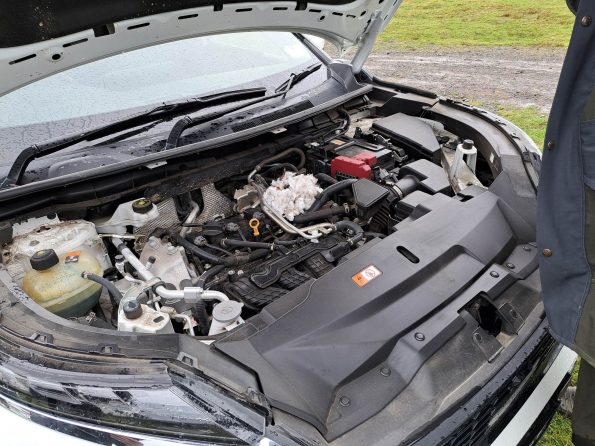Warm, dark and inviting: that’s how a rat views the engine bay of your car. They like it even better if they can get into your boot, the passenger compartment, or behind the dashboard. This is more likely to happen:
- If you don’t use your vehicle very often
- In winter, when it’s cold outside
- When there’s a large rat population and a shortage of good nesting sites
- When you are providing them with a food source

Dealing with rats in your car engine bay can require some persistence, but there are steps you can take to address the issue:
- Inspect: Begin by inspecting your car engine carefully for any signs of rat activity. Look for chewed wires, droppings, nests, or any other evidence; if you have an EV, take care when looking at electrical wires. Use a flashlight to look into dark corners and crevices.
- Make the vehicle safe: If you find evidence and want to clean it yourself, it is best to disconnect the battery before attempting any cleaning. If the rat infestation is behind the dashboard, it’s more complex and you may need help unless you can trap and kill the rat.
- Remove food sources: Rats are attracted to food, so make sure there are no food crumbs or wrappers in your car that could be attracting them; this includes used smoothie cups, and greasy paper bags that once contained a sausage roll. Avoid leaving pet food or birdseed in your garage, as these can attract rodents.
- Disinfecting: Rat droppings are not healthy to breathe in or to touch. First, it’s important to wet them down with a disinfectant solution. Leave this for 5-10 minutes, then clean it up, bag it and throw it away. Now you’ll be able to see what the damage is.
- Fix the damage: You shouldn’t be driving with damage to wires in your bonnet as it can cause a fire. Get it fixed at a mechanic first.
- Set traps: Place rat traps around your car engine, focusing on areas where you’ve seen evidence of rat activity. There are various types of traps, including snap traps, live traps, and electronic traps. Make sure to follow the instructions carefully and check the traps regularly.
- Use repellents: There are natural and commercial repellents available that can deter rats from your car engine. Some options include peppermint oil, mothballs, or commercial rodent repellent sprays. Place these around the engine compartment but be cautious with their placement to avoid damaging any components or creating smells in the cabin.
- Seal entry points: Rats can enter your car engine through small openings, so it’s important to seal any entry points you find. Use steel wool, wire mesh, or expanding foam to block off these openings and prevent rats from getting in.
- Regular maintenance: Once you’ve dealt with the current infestation, it’s important to stay vigilant and continue with regular maintenance to prevent future problems. Keep your car clean, store it in a garage if possible, and check for any signs of rodent activity regularly.
By following these steps, you should be able to effectively get rid of rats in your car engine and prevent them from returning.
